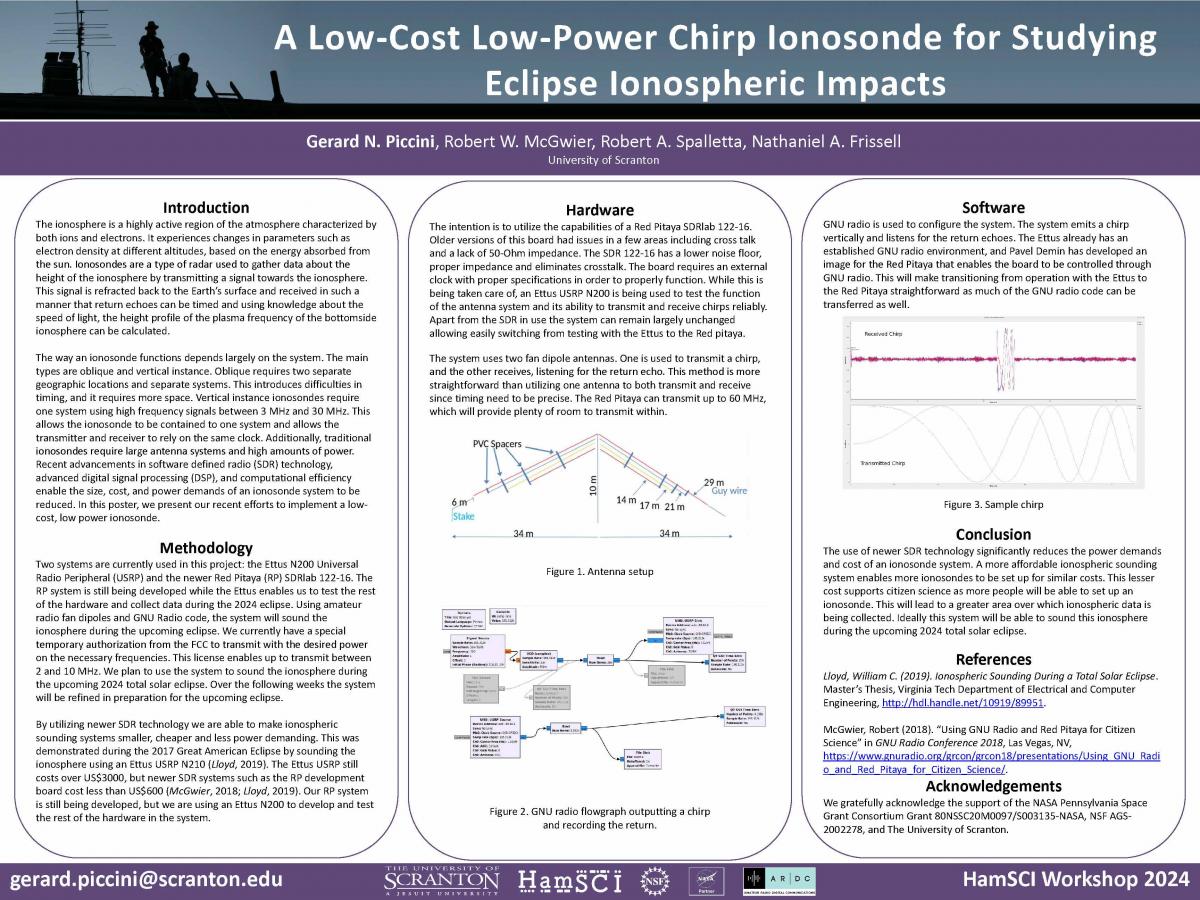| Title | A Low-Cost Low-Power Chirp Ionosonde for Studying Eclipse Ionospheric Impacts |
| Publication Type | Conference Proceedings |
| Year of Conference | 2024 |
| Authors | Piccini, G, McGwier, R, Spalletta, RA, Frissell, NA |
| Conference Name | HamSCI Workshop 2024 |
| Date Published | 03/2024 |
| Publisher | HamSCI |
| Conference Location | Cleveland, OH |
| Abstract | The ionosphere is a region of the atmosphere characterized by both ions and electrons. It is highly active and experiences changes in parameters such as electron density at different altitudes, based on the energy absorbed from the sun. Ionosondes are a type of radar used to gather data about the height of the ionosphere by transmitting a signal towards the ionosphere. This signal is refracted back to the Earth’s surface and received in such a manner that return echoes can be timed to calculate the height profile of the bottomside ionosphere. Traditional ionosondes require large antenna systems and high amounts of power. Recent advancements in software defined radio (SDR) technology, advanced digital signal processing (DSP), and computational efficiency enable the size, cost, and power demands of an ionosonde system to be reduced. In this poster, we present our recent efforts to implement a low-cost, low power ionosonde. Two systems are currently used in this project: the Ettus N200 Universal Radio Peripheral (USRP) and the newer Red Pitaya SDRlab 122-16. The Red Pitaya system is still being developed while the Ettus enables us to test the rest of the hardware and collect data during the 2024 eclipse. Using amateur radio fan dipoles and GNU Radio code, the system will sound the ionosphere during the upcoming eclipse. Over the following weeks the system will be improved in preparation for the upcoming eclipse. |
| Refereed Designation | Non-Refereed |
| Full Text |

